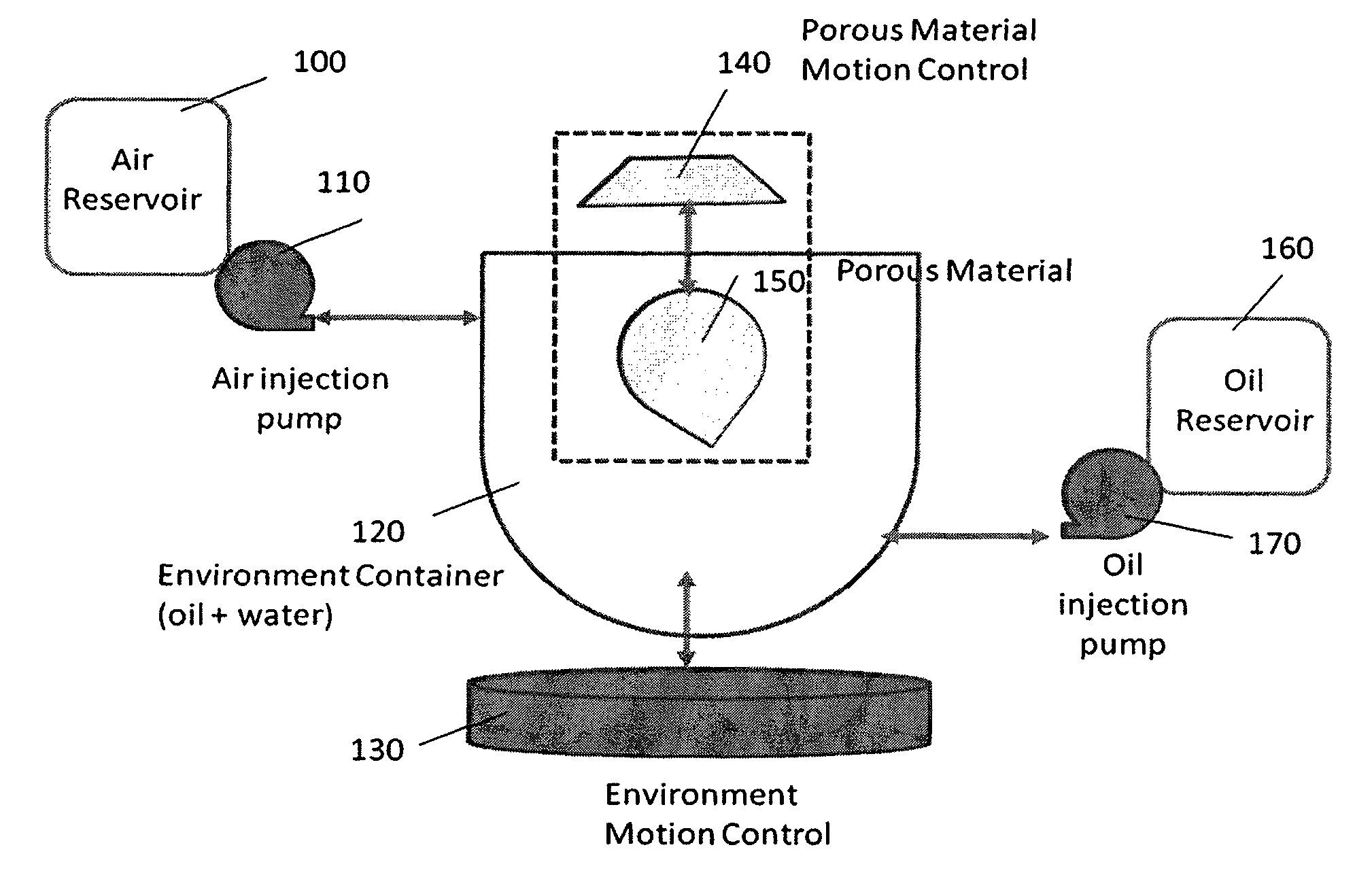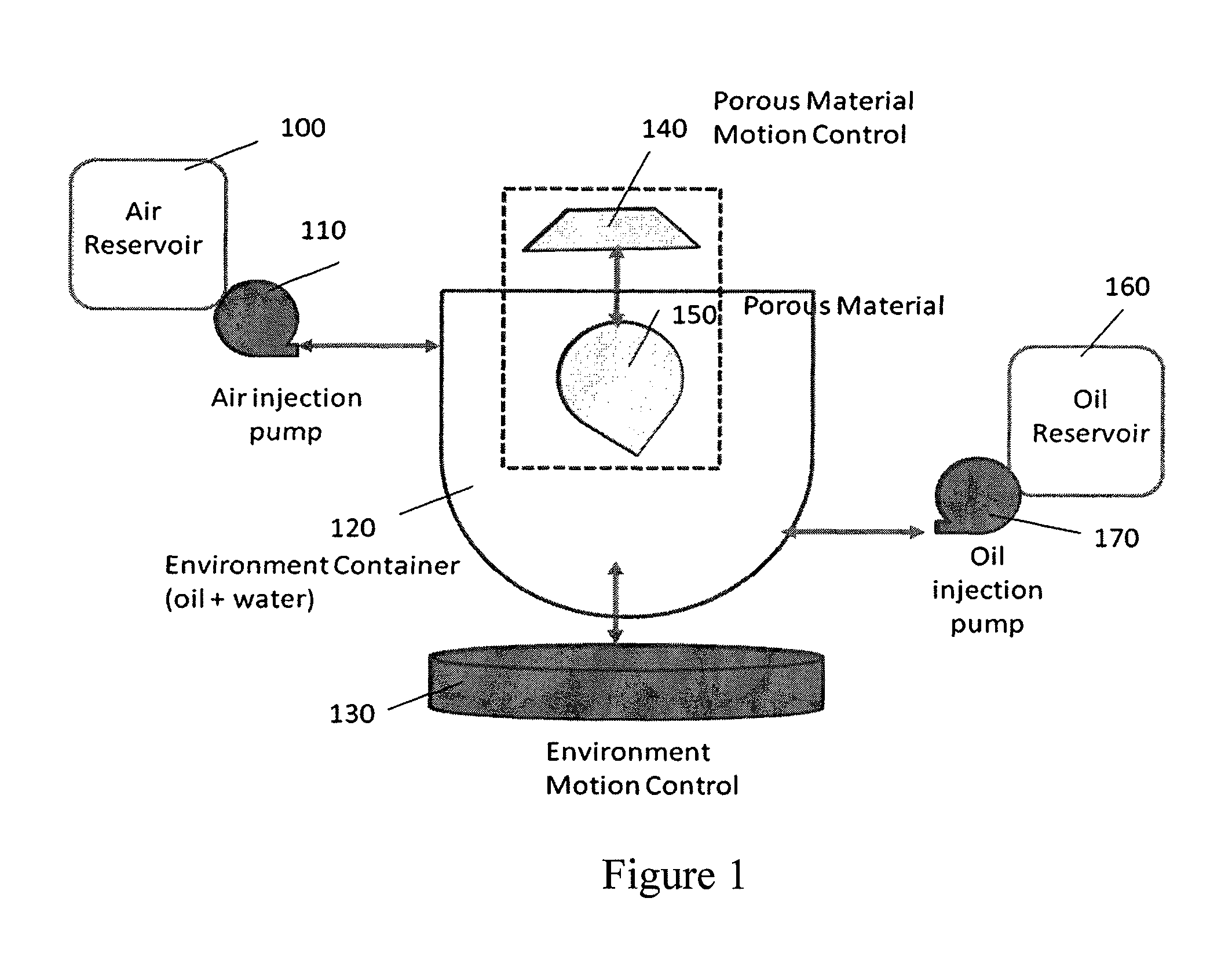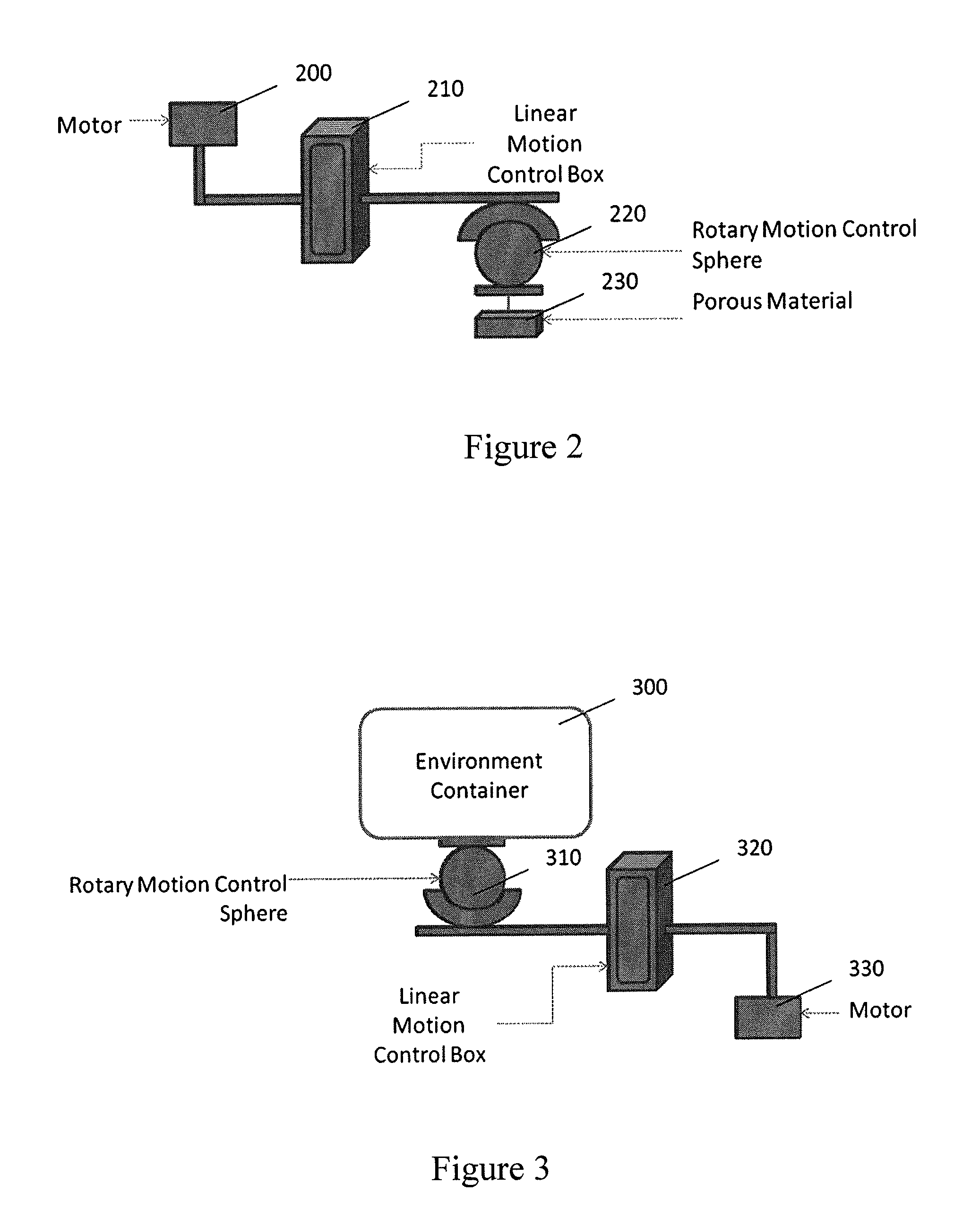System to measure the absorptive capabilities of porous materials used in oil spill remediation
a technology of porous materials and absorption capabilities, applied in the field of oil spill remediation and cleanup techniques, can solve the problems of difficult prevention measures, inability to effectively clean up, and inability to effectively implement bioremediation,
- Summary
- Abstract
- Description
- Claims
- Application Information
AI Technical Summary
Benefits of technology
Problems solved by technology
Method used
Image
Examples
Embodiment Construction
[0025]FIG. 1 shows the block diagram of the proposed testing system. The full system has five subsystems: blocks 100 and 110 make up the wind injection system, blocks 120 and 130 make up the environmental motion control system, blocks 140 and 150 make up the porous material motion system, and blocks 160 and 170 make up the oil injection system. The fifth sub-system called the environment container 120 contains the mixture of water and oil. The oil injection system and the air injection system directly funnel into the environment container. A separate motion control system 130 is used to create movement of the mixture in the environment container. The porous material moves inside the environment container. Depending on the motion vectors of the porous material and the mixture in the environment container, the porous material may be fully or partially submerged in the oil and water mixture.
[0026]We describe a typical use case scenario of the proposed testing system. The testing proces...
PUM
| Property | Measurement | Unit |
|---|---|---|
| oleophilic | aaaaa | aaaaa |
| absorbance | aaaaa | aaaaa |
| movement | aaaaa | aaaaa |
Abstract
Description
Claims
Application Information
 Login to View More
Login to View More - R&D
- Intellectual Property
- Life Sciences
- Materials
- Tech Scout
- Unparalleled Data Quality
- Higher Quality Content
- 60% Fewer Hallucinations
Browse by: Latest US Patents, China's latest patents, Technical Efficacy Thesaurus, Application Domain, Technology Topic, Popular Technical Reports.
© 2025 PatSnap. All rights reserved.Legal|Privacy policy|Modern Slavery Act Transparency Statement|Sitemap|About US| Contact US: help@patsnap.com



